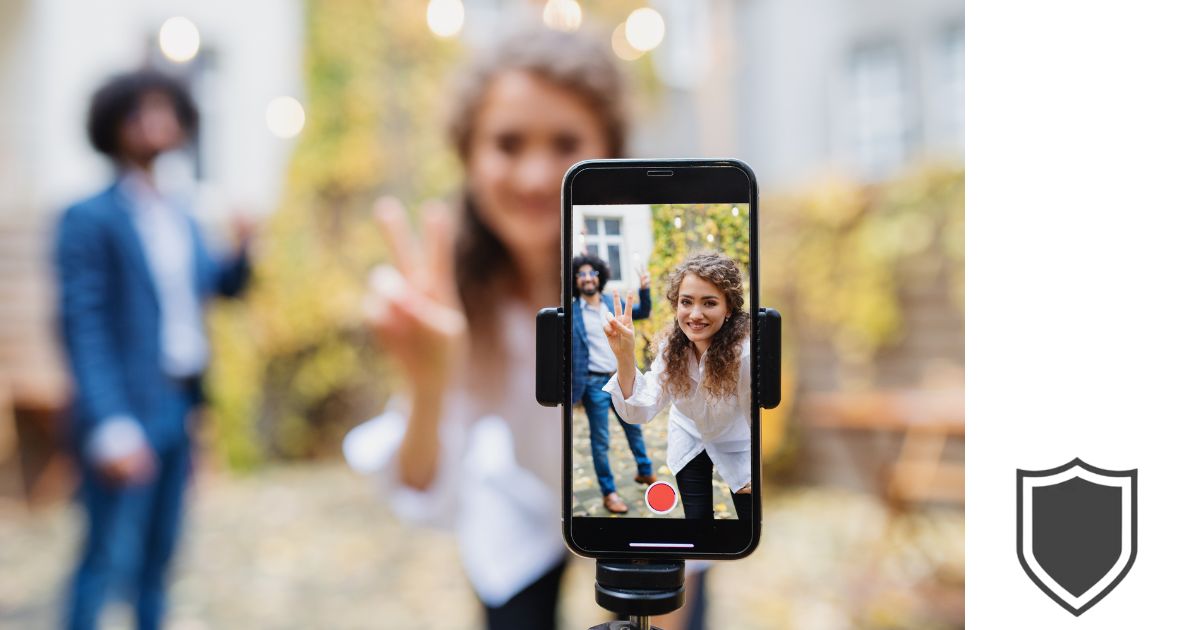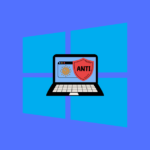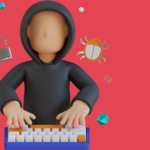Greetings, online dwellers! I’m Dr. Edward Baldwin, and I’m here to illuminate a hidden danger that’s lurking within one of the most favored applications of the current era. In “TikTok Keylogging Exposed: Unmasking the Invisible Data Thief,” we delve into a contemporary issue in cybersecurity that is both surreptitious and startling.
TikTok has taken the world by storm, capturing the hearts and screens of millions. But beneath the surface of catchy tunes and viral dances, there’s a more sinister tune playing — the risk of keylogging. This isn’t just about someone watching you do the latest dance challenge; it’s about invisible threats that could be capturing every keystroke you make.
Keylogging in the context of an app like TikTok raises significant privacy concerns. It’s not just about protecting your dance moves, but safeguarding your personal information, passwords, and other sensitive data from the invisible data thieves. So, let’s dive into the depths of TikTok keylogging, understand its implications, and most importantly, arm ourselves with the knowledge to stay one step ahead. Ready to unveil the secrets? Let’s get started.
Table of Contents
Understanding TikTok Keylogging

In discussing TikTok’s privacy issues, it’s crucial to break down what keylogging entails and how it operates on mobile platforms like TikTok.
What Is Keylogging
Keylogging, as a concept, refers to the process of recording the keystrokes on a device. It’s essentially when every tap of the keyboard is logged, allowing whoever implements the keylogger to potentially access a wide array of sensitive user data. This could range from passwords and credit card information to private messages and search histories.
Keylogging on Mobile Platforms
On mobile platforms, keylogging typically involves tracking and recording actions such as keyboard inputs, screen taps, and other user interactions within apps. TikTok reportedly embedded JavaScript code in its in-app browser, which can monitor user interactions to this extent. However, the company maintains that this capability is used for purposes such as identifying automated bots, debugging, and performance monitoring, and not for collecting sensitive personal data.
TikTok Vulnerabilities
TikTok has faced scrutiny regarding the security of its platform, particularly in the areas of user data and potential keylogging issues.
Historical Incidents
In recent research findings, it was revealed that TikTok’s in-app browser on its iOS application had capabilities to track every keystroke made by users. This discovery contributed to the growing concerns around privacy and security on the platform. Moreover, Microsoft reported a ‘high-severity’ vulnerability in TikTok’s Android app, which could be exploited to compromise user security. These incidents reflect a history of challenges TikTok has faced in protecting its community.
Potential Exploits
The key potential exploit identified in these incidents is through keylogging, where malicious code within the app can record every keystroke, possibly capturing sensitive information such as passwords and personal messages. Even though the full extent of tracking via the in-app browser is not entirely clear, the capability for such surveillance exists, raising questions about what data could be accessed and how it could be misused if proper safeguards are not in place.
Keylogging Methods

In my exploration of keylogging techniques, I came across two primary methods: software-based and hardware-based strategies. Each carries its distinctive modes of operation.
Software Keyloggers
Software keyloggers are applications installed on a computer system to covertly record the keystrokes made by a user. These can range from simple programs that capture every keystroke and store the information for later retrieval to more sophisticated systems that can send this data over the internet to a third party. For instance, the controversy surrounding TikTok suggested that the app’s in-app browser had capabilities akin to software keylogger functionality, where it could potentially record input information such as passwords and credit card details.
Characteristics of Software Keyloggers:
- Invisibility: Often running in the background without the user’s knowledge.
- Data Transmission: Capable of sending captured information to external servers.
- Method of Infection: Can be installed via malicious software downloads or vulnerabilities in other applications.
Hardware Keyloggers
In contrast, hardware keyloggers are physical devices that plug into a computer, typically between the keyboard cable and the USB or PS/2 port. These devices capture and store keystrokes directly from the keyboard itself.
Characteristics of Hardware Keyloggers:
- Physical Presence: Detectable through a visual inspection of the computer’s ports.
- Storage Capacity: Varies, but has a finite amount of memory for keystroke data.
- Installation: Requires physical access to the target computer.
Example of a Basic Hardware Keylogger:
| Property | Description |
|---|---|
| Form Factor | Small, inline devices that can be easily hidden. |
| Data Retrieval | Typically through a USB connection. |
| Power Source | Powered by the computer’s keyboard port. |
Preventing Keylogging on TikTok

To ensure our privacy remains intact while enjoying TikTok, I’ve pinpointed some actions we can take to prevent potential keylogging.
Security Practices
I always recommend starting with the basics to bolster our online security. For TikTok, this means:
- Regularly updating the app: Staying current with updates ensures I have the latest security patches.
- Using strong passwords: I make sure my password is complex and changed periodically.
- Being cautious with third-party apps: When prompted to open a link in TikTok’s in-app browser, I consider copying the link and opening it in a more secure browser.
- Monitoring app permissions: I regularly check which permissions TikTok has on my device and limit them where possible.
Third-Party Security Tools
In addition to in-app precautions, I’ve learned that using external tools can provide another layer of security:
- Virtual Keyboards: These can prevent keylogging by encrypting keystrokes.
- Security Software: I install reputable antivirus and anti-keylogging software that alerts me to any malicious activity.
- VPN Services: Encrypting my internet connection with a VPN can provide privacy from network-based keylogging attempts.
Detection and Response

In this section, I’ll explain how to spot keylogging software within an app like TikTok and the steps to take if you suspect your keystrokes are being monitored.
Identifying Keylogging
Check for Unusual Permissions: An app that asks for more permissions than its functionality warrants may be a red flag. For TikTok, if it seems to require access to keyboard inputs and taps beyond what is necessary, it could indicate a keylogging issue.
Technical Analysis: Developers and researchers can inspect the code of TikTok’s app. If, like Felix Krause reported, there’s JavaScript that could track your keystrokes, then TikTok might be capable of keylogging. This type of scrutiny often requires advanced skills to interpret the code and understand its implications.
Responding to Keylogging Incidents
Update or Delete the App: If you find evidence of keylogging or if concerns are raised by a credible source, updating the app to the latest version or deleting it entirely until the issue is resolved could be a prudent choice.
Change Passwords: In case your information has been compromised, immediately change your passwords, especially if they were inputted while using the in-app browser.
Alert Others: Sharing information with friends and online communities helps raise awareness. If more people are informed, they can take steps to protect themselves as well.
Legal and Ethical Considerations

In this section, I’ll explore the legal and ethical implications of TikTok’s alleged keylogging practices. By examining privacy concerns and regulatory compliance, I aim to shed light on the potential impact such activities could have on users and society at large.
Privacy Concerns
Keylogging—the recording of keystrokes on a device—can be a significant infringement on personal privacy. On TikTok, concerns arise when my actions within the app, such as every button I tap or every keystroke I make, are allegedly logged. This form of data collection can include sensitive information, from passwords to private messages, raising questions about the intent and extent of this monitoring.
- Sensitivity of Data Captured: Including potentially private and confidential information.
- Consent and Disclosure: The degree to which users are informed about this data capture, if at all.
Regulatory Compliance
TikTok’s obligation to adhere to laws and regulations—like the General Data Protection Regulation (GDPR) in the European Union or Consumer Protection Laws in various states—is fundamental. These legal frameworks typically aim to protect individuals from unauthorized or excessive data collection.
- International Standards: Adherence to global privacy standards differs from one country to another.
- Legal Challenges: Lawsuits have been filed alleging TikTok’s non-compliance with consumer protection laws, which can have significant legal ramifications.
In examining these, I must consider how TikTok’s policies and practices align with both the ethical expectations of users and the strictures of applicable law.
User Awareness and Education

With the rising concerns about potential keylogging in apps like TikTok, I believe it’s crucial to focus on user awareness and education. This will empower individuals to use the app responsibly and safeguard their privacy.
Promoting Safe Usage
Routine checks: I always recommend users regularly review the permissions they’ve granted to any app. For TikTok, this means inspecting what data the app has access to.
- Privacy settings: Adjusting TikTok’s privacy settings can limit what you share unintentionally. I suggest taking the time to understand these settings thoroughly.
Educational Resources
Verified Information: Seek out resources from trusted cybersecurity experts. It’s essential to rely on accurate information to fully understand the implications of keylogging.
- Official Communications: Keep an eye on official statements from TikTok regarding user privacy and data handling practices, so you have the most up-to-date information.
By staying informed and proactively managing app permissions and settings, I maintain control over my data and encourage others to do the same.
Future of TikTok Security

In addressing the security landscape for TikTok, my focus is on understanding the evolving dangers and how TikTok could enhance its defenses to protect users’ data.
Emerging Threats
Cybersecurity Evolution: Just as technology progresses, so do the tactics of those with malicious intent. In the case of TikTok, the potentiality for keylogging—where every keystroke made by a user can be tracked—highlights a clear risk. My approach is to constantly monitor such vulnerabilities, aiming to stay ahead of emerging threats which could compromise user privacy.
Sophistication of Attacks: Attacks become more sophisticated over time, and given TikTok’s vast user base, it presents an attractive target for cybercriminals. I am attentive to how these attacks evolve, including novel ways of implementing keylogging or other methods of data extraction.
Advancements in Protection
Technology Upgrade: To counteract threats, TikTok’s in-app security technology needs to keep evolving. It should employ advanced encryption methods and real-time threat detection algorithms, which I recommend for bolstering security against keyloggging attempts.
Transparency and Control: Greater transparency in how TikTok handles data, alongside giving users more control, would mark a significant step in advancing security. I advise implementing clear user-consent protocols and options for users to opt-out of data monitoring, which can instill greater trust and safety.
By continuously analyzing and adapting to the dynamic field of cybersecurity, TikTok can aim to stay ahead of threats and ensure users feel confident about their data security.
The Last Word
And that wraps up our deep dive into the hidden world of TikTok Keylogging. “TikTok Keylogging Exposed: Unmasking the Invisible Data Thief” has taken us through the murky waters of cybersecurity threats lurking behind our screens. It’s clear that in the digital age, staying vigilant and informed is not just a choice, but a necessity.
As we conclude, remember that your online presence isn’t just about the content you create or consume; it’s about safeguarding the personal data that represents your digital identity. Be cautious, be curious, and most importantly, be proactive in protecting your information. Tools and practices to secure your data are your best allies against these invisible threats.
So, next time you open TikTok or any other app, remember the power of awareness and the importance of digital hygiene. Keep your data secure, your awareness sharp, and continue enjoying the digital world with confidence and peace of mind. Here’s to making informed choices in our online journey!
TikTok Keylogging FAQs

In light of recent concerns regarding keylogging capabilities within TikTok’s in-app browser, I’d like to address some frequently asked questions. These should help clarify how users can mitigate risks and safeguard their personal information while using social media apps.
How can I protect against keylogging risks on social media apps?
To protect yourself from keylogging risks on social media apps, be cautious about the permissions you grant to any app. Regularly update your apps and operating system to ensure you have the latest security features, and consider using external browsers with security features for web navigation rather than in-app browsers.
What steps can I take to disable in-app browsers for a safer browsing experience?
To disable in-app browsers, you can usually go to the settings of the social media app and look for an option that allows you to open links in your default web browser instead. This ensures that when you click on a link, it will open in a separate, possibly more secure, web browser.
Is it possible for social media platforms to record keystrokes outside their own app?
Generally, social media platforms cannot record keystrokes outside of their own app due to operating system restrictions. Both iOS and Android systems limit the scope of an app’s functionality to its own environment to protect user privacy.
Are there specific risks associated with keylogging on different operating systems like iOS or Android?
Both iOS and Android operating systems have built-in security measures to guard against keylogging. However, the risk might differ based on the level of restrictions the operating system places on third-party apps. It’s important to download updates and patches that both operating systems frequently release to address security vulnerabilities.
Can third-party apps potentially lead to keylogging vulnerabilities on social media accounts?
Third-party apps can create keylogging vulnerabilities if they are granted extensive permissions. Be wary of granting accessibility or overlay permissions to apps unless they come from trusted developers and sources, as these could potentially intercept your keystrokes.
What are some signs that your device may be compromised by a keylogger?
If your device shows unexpected behavior such as sudden slowdowns, unexplained data usage spikes, or abnormal battery drain, these could be indicators of a keylogger or other types of malware. Be attentive to any unfamiliar or suspicious application installations and monitor your device’s performance and data usage closely.
- Amazon Email Phishing: How to Identify and Avoid Scams - May 16, 2024
- Malwarebytes vs McAfee: Decoding the Ultimate Antivirus Battle - May 16, 2024
- Best Antivirus for Windows 10: Expert Recommendations for 2023 - May 15, 2024









